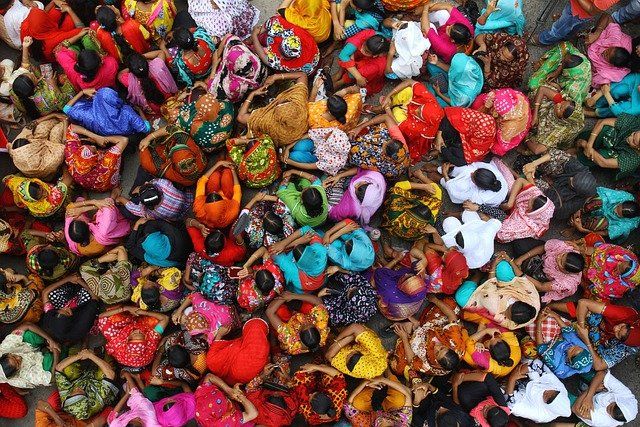In India, nine in a thousand children are born with Congenital Heart Defects (CHD), translating to 2 lac children every year. (Medical Journal of Indian Pediatrics, 2021). More than 1/5th of these babies have severe defects that require treatment in the first year. However, very few are diagnosed and receive timely treatment. Present at birth, CHDs are primarily seen in neonates, although some may be discovered later in infants and children.
CHD treatment requires dedicated health care facilities, infrastructure, and a trained workforce. Many studies report that CHD in childhood increases the risk of diseases like asthma, epilepsy, heart failure in adulthood and psychiatric disorders (University of Helsinki, 2020). Late diagnosis of CHD carries a high risk of mortality, morbidity and handicap. Thus, CHDs are life-threatening and need to resolve as early as possible.
In rural India, CHD’s are a formidable public health problem that is complex. Due to limited screening at the grassroots, parents seek medical attention only when children develop significant symptoms. Further, lack of information with frontline workers, social and religious stigma also leads to late referrals. Rural families are often unable to keep up with the expensive treatment and limited access to specialized care. Thus, causing a delay in diagnosis and treatment. During the COVID-19 pandemic, heart surgeries of children with CHD’s have reduced by 70%.
The majority of the centres are in the private sector. Rural families with poor backgrounds cannot afford the treatment. In India, most centres are located in South India, where the majority population is relatively better in literacy and standard of living. And accessing the government centres is exhaustive as they have long waiting lists. This all results in treatment due to long waiting times, especially for rural families.
Let us see one case in point to understand how things become difficult for a rural household that needs to treat their child for CHD. Shamli (Name changed) is a four-year-old and a resident of a tribal village in remote Maharastra. She was already 18 months of age when her parents realized that she was achieving most of her growth milestones late besides she was mostly lazy or sick. Initially, Shamli’s parents were reluctant to travel to Mumbai to visit a paediatrician, so they took the support of medicines from a local doctor. But, with Shamli’s condition deteriorating each day, a health worker informed them about a health camp being organized at their Taluka. During this camp, Shamili was diagnosed with a hole in her heart and the paediatrician recommended her urgent surgery. Due to limited financial resources, her parents delayed the surgery, and it was only when she was three years old, she received her treatment. That was possible due to the support from a non-profit which is working to provide treatment of children suffering from Congenital Heart Diseases by supporting all treatment and travel costs for the child and family. Like Shamli, there is a large number of children in rural India awaiting timely treatment and surgeries.
Despite these many challenges, I see hope as things are improving. Rashtriya Bal Swasthaya Karyakram, the promising program of the Indian government aiming for timely Child health screening and early intervention services, assures a systemic approach of early identification and link to care, support, and treatment. Along with this, there are many examples where many state governments, communities, corporates and social organizations trying their best to solve this issue on a scale, especially for marginalized and vulnerable families.
I believe that collaborative approaches with a sense of urgency can help us provide a healthy and safe future for these children suffering from CHD. Based on our experiences over the last many years in rural Maharashtra and a deep understanding of working with on-field challenges, the following are key action areas to successfully address the CHD problem, especially in rural areas –
1. Frontline Healthcare Workers
The frontline workers act as stronger anchors for early identification, timely referral and effective management of CHD’s. Mostly being from the community themselves, they can help in addressing the stigma, counseling the parents before and after the treatment, early screening, timely referrals, diagnosis, and ensuring follow-ups.
2. Collaboration
The formidable Congenital Health Disease and extensive range of activities for complete awareness, counseling and treatment can be managed effectively and efficiently by partnerships between government authorities, frontline healthcare workers and non-profits to ensure and improve access to government schemes. In our experience, the public-private partnership model has been the key to the successful and timely treatment of many rural children suffering from this deadly disease.
3. Resource Allocation
The vast magnitude of this issue calls for high resource requirements and more health care facilities for the treatment. Proactive response from the corporates and HNIs to provide substantial funding is the need of the hour. This will help meet the urgent need for dedicated CHD units in every district or cluster of the district. It also supports meeting the cost-intensive equipment and trained medical experts for treatment call for corporates and HNI’s to contribute with open hearts.
In the end, I urge all stakeholders to come forward and join hands to meet the challenges of CHD by acting on the above three. Urgent response to CHD is the need of this hour and as a nation, we should resolve this public health problem and ensure a healthy future for lacs of children with CHDs.
Views of the author are personal and do not necessarily represent the website’s views.

Mangesh Wange is the CEO at the Swades Foundation. He has been working with Swades Foundation since May, 2016 and has more than 30 years of General Management experience with P&L responsibility and in leading successful start-ups in corporate and social sectors.
Thank you for reading the column. Please drop a line and help us do better.


